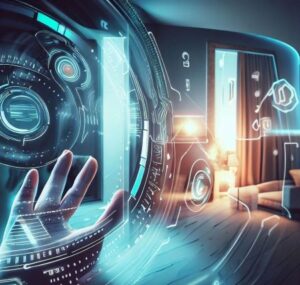The European Parliament’s recent news about energy-saving initiatives marks a significant step towards enhancing energy efficiency and reducing energy consumption in the EU. As the world faces pressing environmental challenges, sustainable energy management strategies are becoming increasingly crucial. Haptic solutions, with their innovative and intuitive approach, are poised to play a pivotal role in this pursuit. In this article, we explore how haptic technology can be harnessed to maximize energy efficiency and align with the EU’s ambitious goals.
1. Embracing the EU’s Vision for Energy Efficiency
The EU’s commitment to reducing energy consumption is reflected in various initiatives and legislative measures. As the region seeks to transition towards a greener and more sustainable future, energy management strategies have become a top priority. Haptic solutions offer a unique blend of advanced technology and user-friendly interfaces, making them a powerful tool to optimize energy usage across industries and sectors.
2. The Power of Haptic Solutions in Energy Management
Haptic technology goes beyond traditional approaches to energy management. By providing tangible and interactive experiences, haptic solutions enable users to intuitively control and monitor energy consumption. From smart building automation to energy-efficient appliances, haptic interfaces enhance user engagement, fostering a culture of conscious energy use.
3. Enhancing Energy-Efficient Buildings
Buildings account for a significant portion of energy consumption in the EU. Adopting haptic solutions in building management systems can lead to more precise control over heating, cooling, lighting, and other energy-intensive processes. Occupants can actively participate in energy-saving efforts through real-time feedback and personalized settings, reducing waste and optimizing energy efficiency.
4. Empowering Consumers for Informed Choices
Consumer behavior plays a vital role in energy consumption patterns. Haptic technology empowers consumers to make informed choices about their energy usage by providing real-time insights and analytics. Whether it’s through smart home devices or energy management apps, haptic interfaces create a seamless and engaging experience that encourages responsible energy consumption.
5. Strengthening Industrial Energy Management
Industries, too, can benefit from haptic solutions to enhance their energy management practices. From manufacturing processes to logistics and supply chains, haptic interfaces enable industrial players to identify energy-intensive areas and implement targeted efficiency measures. This results in reduced operational costs and a greener industrial landscape.
6. Collaborative Efforts for a Sustainable Future
As haptic technology continues to evolve, collaboration between businesses, policymakers, and technology experts is crucial to harness its full potential. By fostering innovation and sharing best practices, we can collectively accelerate the adoption of haptic solutions for energy management, advancing the EU’s vision for a sustainable future.
“Real-time feedback through haptic interfaces empowers individuals and businesses to make informed decisions about their energy consumption, fostering a culture of energy-consciousness.”
In line with the EU’s ambitious efforts to reduce energy consumption and promote sustainability, haptic solutions emerge as a transformative force in energy management. By empowering individuals and industries to make conscious energy choices, haptic interfaces pave the way for a greener and more efficient tomorrow. As we embrace this revolutionary technology, Haptic R&D Consulting remains committed to driving innovation and supporting organizations in their journey towards a more sustainable and energy-efficient future.